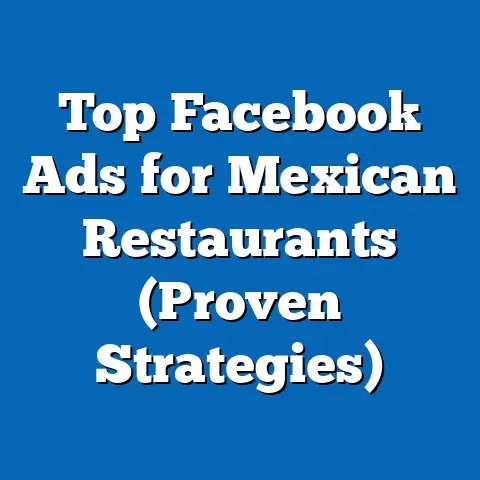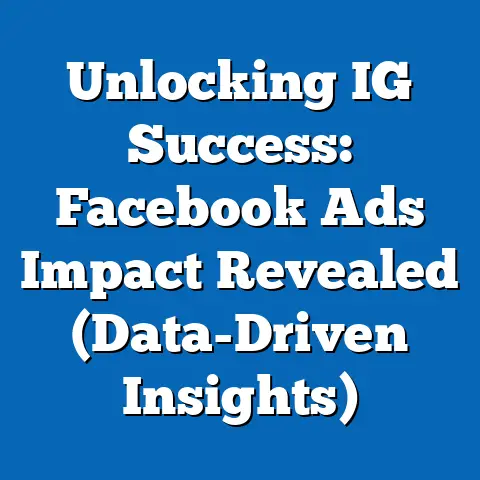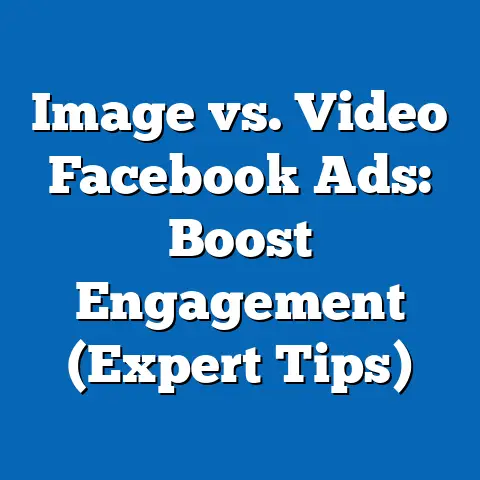Unlock Affordable Facebook Ads Globally (2025 Insights)
Facebook. The name alone conjures images of connection, community, and, for businesses like yours, a world of potential customers. As we navigate the ever-evolving digital marketing landscape, one thing remains constant: Facebook’s dominance as a platform for reaching a global audience. With billions of active users spanning every corner of the world, it’s a goldmine for businesses looking to expand their reach and connect with new markets.
But here’s the catch: advertising on Facebook isn’t always cheap. And as the platform matures, and competition intensifies, the cost of reaching your target audience can quickly spiral out of control. This is especially true for small and medium-sized enterprises (SMEs), who often operate with limited budgets and can’t afford to throw money at ineffective campaigns.
I’ve seen firsthand the frustration of businesses struggling to make their Facebook ad spend work for them. They’re pouring money into campaigns that yield little to no return, feeling like they’re shouting into the void. I’ve also seen the incredible success stories of businesses that have cracked the code, achieving remarkable growth through smart, affordable Facebook advertising strategies.
The key to unlocking this potential lies in understanding the nuances of regional markets, adapting your strategies to resonate with local audiences, and leveraging the powerful tools that Facebook provides. It’s about being strategic, creative, and data-driven.
This guide is designed to equip you with the knowledge and insights you need to navigate the complex world of Facebook advertising and unlock affordable strategies for effective engagement in various regions. Whether you’re a seasoned marketer or just starting out, I’m confident that you’ll find valuable information here to help you optimize your campaigns and achieve your business goals.
In this article, I’ll walk you through the intricacies of global Facebook advertising, focusing on how to achieve significant impact without breaking the bank. I’ll delve into the importance of understanding regional needs, how advertising costs are evolving, and the specific strategies you can implement to ensure your ad spend is both effective and economical.
By the end of this guide, you’ll have a comprehensive understanding of how to:
- Tailor your campaigns to specific regional markets by understanding their unique demographics, cultural nuances, and economic conditions.
- Navigate the complexities of Facebook ad pricing and understand how costs vary across different regions.
- Implement affordable advertising strategies that leverage local insights, creative ad formats, and Facebook’s optimization tools.
- Learn from real-world case studies of global brands and small businesses that have successfully implemented affordable Facebook ad campaigns.
So, let’s dive in and unlock the secrets to affordable Facebook advertising, empowering you to reach a global audience without emptying your wallet.
Section 1: Understanding Regional Needs
Before you even think about crafting your Facebook ad, it’s crucial to understand the landscape in which you’re operating. You can’t simply launch a generic campaign and expect it to resonate with audiences across the globe. Each region has its own unique characteristics, and understanding these differences is paramount to creating effective and affordable ad campaigns.
1.1 Defining Regional Markets
What exactly do I mean by “regional markets?” It’s more than just geographical location. It’s about grouping countries or areas with similar cultural, economic, and demographic characteristics. Think of it this way: North America isn’t just the United States, Canada, and Mexico. It’s a region encompassing diverse subcultures, economic disparities, and varying levels of technological adoption.
Here’s a quick breakdown of some key regional markets and their defining characteristics:
- North America: Known for its high internet penetration, advanced e-commerce infrastructure, and tech-savvy consumers. Advertising here tends to be more expensive due to high competition.
- Europe: A diverse continent with varying levels of economic development and cultural preferences. Each country often requires a tailored approach, respecting language differences and local regulations.
- Asia: A vast and rapidly growing market with diverse cultures, languages, and economic conditions. Countries like China and India offer huge potential but require a deep understanding of local nuances.
- Africa: A continent with immense growth potential, driven by increasing internet access and a young population. Mobile-first strategies are crucial here due to widespread smartphone adoption.
- Latin America: A region with a strong social media culture and growing e-commerce adoption. Understanding local languages and cultural sensitivities is essential for success.
For example, I once worked with a clothing brand that was launching a campaign in both the US and the UK. They initially planned to use the same ad creative and messaging in both markets. However, after conducting some research, we realized that the term “pants” had different meanings in the US and the UK (trousers vs. underwear!). By adapting the language to suit the local audience, we avoided a potentially embarrassing and costly mistake.
Key Takeaway: Don’t treat the world as a homogenous market. Identify your key regional markets and understand their unique characteristics.
1.2 Identifying Target Audiences
Once you understand the broader regional context, it’s time to zoom in and identify your specific target audience within each region. This means going beyond basic demographics like age and gender and delving into their interests, behaviors, and purchasing habits.
Here are some key factors to consider when identifying your target audience by region:
- Age: Different age groups have different preferences and needs. For example, younger audiences may be more receptive to video ads and influencer marketing, while older audiences may prefer more traditional ad formats.
- Gender: Understanding gender-specific preferences is crucial for tailoring your ad messaging and visuals. However, be mindful of avoiding stereotypes and promoting inclusivity.
- Interests: Facebook’s targeting options allow you to reach users based on their interests, hobbies, and passions. This is a powerful way to connect with audiences who are genuinely interested in your products or services.
- Purchasing Behavior: Understanding how your target audience shops online is crucial for optimizing your ad campaigns. Do they prefer to buy directly from your website, or do they prefer to shop through online marketplaces? What payment methods do they use?
- Cultural Nuances: Cultural sensitivities can vary significantly from region to region. Be mindful of local customs, traditions, and religious beliefs when crafting your ad messaging and visuals.
I remember working on a campaign for a travel company that was promoting tours to Southeast Asia. They initially targeted a broad audience of “travel enthusiasts” in the US. However, after analyzing the data, we realized that the campaign was performing much better among users who had expressed an interest in specific Southeast Asian countries or cultures. By narrowing our targeting to this more specific audience, we were able to significantly improve the campaign’s performance and reduce our ad spend.
Key Takeaway: Don’t rely on generic targeting. Conduct thorough research to understand your target audience’s specific needs, interests, and behaviors in each region.
1.3 Regional Challenges and Opportunities
Advertising in different regions comes with its own set of challenges and opportunities. Understanding these nuances is essential for developing effective and affordable ad campaigns.
Here are some common challenges and opportunities to consider:
- Language Barriers: Communicating effectively in the local language is crucial for resonating with your target audience. Consider translating your ad copy and creative assets into the local language.
- Payment Systems: Payment preferences vary significantly from region to region. Ensure that you offer payment methods that are commonly used and trusted in each region.
- Regulatory Constraints: Advertising regulations can vary significantly from country to country. Be aware of local regulations regarding data privacy, advertising standards, and prohibited content.
- Emerging Markets: Many emerging markets offer significant growth potential for businesses. However, it’s important to understand the unique challenges and opportunities of these markets.
- Growing Internet Penetration Rates: As internet access continues to expand in many regions, the potential audience for your Facebook ads is also growing.
I once worked with a software company that was launching a product in Brazil. They initially planned to use the same payment system that they used in the US. However, they quickly realized that Brazilians prefer to pay with Boleto Bancário, a local payment method. By integrating Boleto Bancário into their payment system, they were able to significantly increase their sales in Brazil.
Key Takeaway: Be aware of the specific challenges and opportunities of advertising in each region. Adapt your strategies to overcome these challenges and capitalize on the opportunities.
Next Steps:
- Identify your key regional markets.
- Research the demographics, cultural nuances, and economic conditions of each region.
- Develop detailed target audience profiles for each region.
- Be aware of the specific challenges and opportunities of advertising in each region.
Section 2: The Evolution of Facebook Advertising Costs
Now that you have a better understanding of regional needs, let’s delve into the world of Facebook advertising costs. Understanding how these costs have evolved and how they vary across different regions is crucial for developing affordable advertising strategies.
2.1 Historical Overview
Facebook advertising has come a long way since its early days. Back then, it was a relatively simple and inexpensive way to reach a large audience. However, as the platform has matured and competition has increased, advertising costs have steadily risen.
Here are some key milestones in the evolution of Facebook advertising costs:
- Early Days (2004-2010): Relatively low ad costs due to limited competition and a smaller user base.
- Growth Phase (2010-2015): Increased competition led to rising ad costs, but Facebook introduced more sophisticated targeting options, allowing advertisers to reach more relevant audiences.
- Maturation Phase (2015-Present): Ad costs continue to rise due to increased competition and platform saturation. Facebook focuses on improving ad relevance and user experience.
Throughout this evolution, two key metrics have remained fundamental:
- Cost Per Click (CPC): The amount you pay each time someone clicks on your ad.
- Cost Per Thousand Impressions (CPM): The amount you pay for every 1,000 times your ad is shown.
I remember when CPCs were just a few cents. It felt like you could reach the entire world for pennies on the dollar! Of course, those days are long gone. But the underlying principles remain the same: the more relevant your ad, the lower your costs will be.
Key Takeaway: Facebook advertising costs have steadily risen over time due to increased competition and platform maturation. Understanding this historical trend is crucial for developing realistic budget expectations.
2.2 Current Pricing Trends (2025 Forecast)
Looking ahead to 2025, I expect Facebook advertising costs to continue to rise, albeit at a slower pace than in previous years. This is due to a number of factors, including:
- Increased Competition: More businesses are advertising on Facebook than ever before, driving up the cost of ad inventory.
- Ad Format Changes: Facebook is constantly experimenting with new ad formats, which can impact pricing. For example, video ads tend to be more expensive than image ads.
- Shifts in User Engagement: Changes in user behavior can also impact ad costs. For example, if users are spending less time on Facebook, the demand for ad inventory may decrease, leading to lower prices.
While it’s impossible to predict the future with certainty, I believe that businesses will need to become even more strategic and data-driven in order to achieve a positive ROI on their Facebook ad spend. This means focusing on creating highly relevant ads, targeting the right audience, and optimizing their campaigns for maximum performance.
Key Takeaway: Expect Facebook advertising costs to continue to rise in 2025. Focus on creating highly relevant ads, targeting the right audience, and optimizing your campaigns for maximum performance.
2.3 Regional Pricing Variations
One of the most important factors to consider when planning your Facebook ad budget is regional pricing variations. Advertising costs can vary significantly from region to region, depending on factors such as:
- Competition: Regions with high competition, such as North America and Europe, tend to have higher ad costs.
- Economic Development: Regions with strong economic development tend to have higher ad costs.
- Internet Penetration Rates: Regions with high internet penetration rates tend to have higher ad costs.
For example, I’ve seen CPCs in the US be as much as 5-10 times higher than in some developing countries. This is simply because there are more businesses competing for the same ad inventory in the US.
Here are some general guidelines for regional pricing variations:
- North America and Europe: Highest ad costs.
- Asia-Pacific: Moderate ad costs.
- Latin America: Moderate to low ad costs.
- Africa: Lowest ad costs.
Key Takeaway: Advertising costs vary significantly from region to region. Factor these variations into your budget planning.
Next Steps:
- Research historical trends in Facebook advertising costs.
- Stay informed about current pricing trends and forecasts for 2025.
- Understand how advertising costs vary by region.
- Develop a realistic budget that takes into account these factors.
Section 3: Strategies for Affordable Facebook Advertising
Okay, so we’ve established that Facebook advertising can be expensive, and that costs vary significantly from region to region. But don’t despair! There are plenty of strategies you can implement to make your Facebook ad spend more affordable and effective.
3.1 Leveraging Local Insights
One of the most effective ways to reduce your Facebook advertising costs is to leverage local insights. This means understanding the specific needs, interests, and behaviors of your target audience in each region, and tailoring your ad campaigns accordingly.
Here are some ways to leverage local insights:
- Conduct thorough market research: Use surveys, focus groups, and other research methods to gather data about your target audience in each region.
- Analyze your website traffic: Use Google Analytics and other web analytics tools to track where your website traffic is coming from and how users are interacting with your website.
- Monitor social media conversations: Use social listening tools to track conversations about your brand and your competitors in each region.
- Partner with local influencers: Local influencers can provide valuable insights into the needs and preferences of their followers.
I once worked with a food delivery company that was launching a campaign in Mexico City. They initially planned to use the same ad creative that they used in the US. However, after conducting some market research, they realized that Mexicans have a very different relationship with food than Americans. They value freshness, authenticity, and social connection. By adapting their ad creative to reflect these values, they were able to significantly improve the campaign’s performance and reduce their ad spend.
Key Takeaway: Leverage local insights to understand the specific needs, interests, and behaviors of your target audience in each region.
3.2 Ad Formats and Creative Strategies
The ad format you choose and the creative assets you use can have a significant impact on your advertising costs. Some ad formats are simply more expensive than others, and some creative strategies are more effective at engaging audiences.
Here are some tips for choosing the right ad format and creative strategy:
- Experiment with different ad formats: Facebook offers a variety of ad formats, including image ads, video ads, carousel ads, and collection ads. Experiment with different formats to see which ones perform best for your target audience.
- Use high-quality visuals: High-quality visuals are essential for capturing attention and engaging audiences. Use professional photography and videography, or create eye-catching graphics.
- Write compelling ad copy: Your ad copy should be clear, concise, and persuasive. Highlight the benefits of your product or service and include a strong call to action.
- Tailor your creative assets to each region: As we discussed earlier, cultural sensitivities can vary significantly from region to region. Be mindful of local customs, traditions, and religious beliefs when crafting your ad messaging and visuals.
I’ve found that video ads, while often more expensive upfront, can be incredibly effective at engaging audiences and driving conversions, ultimately lowering your cost per acquisition. However, it’s crucial to create high-quality videos that are relevant to your target audience and optimized for mobile viewing.
Key Takeaway: Experiment with different ad formats and creative strategies to find what works best for your target audience in each region.
3.3 Utilizing Facebook’s Tools for Optimization
Facebook offers a variety of tools and features that can help you optimize your ad campaigns and reduce your advertising costs.
Here are some of the most useful tools:
- A/B Testing: A/B testing allows you to test different versions of your ad to see which one performs best. This is a great way to optimize your ad creative, targeting, and bidding strategies.
- Lookalike Audiences: Lookalike audiences allow you to reach new people who are similar to your existing customers. This is a great way to expand your reach and find new customers who are likely to be interested in your products or services.
- Budget Optimization: Facebook’s budget optimization tools can help you allocate your budget more efficiently across different ad sets. This is a great way to maximize your ROI.
- Automated Ad Rules: These allow you to set triggers that will automatically pause or adjust your ads based on their performance. This can save you time and money by preventing you from wasting spend on underperforming ads.
I highly recommend taking advantage of A/B testing. I’ve personally seen how running small tests on different ad copy, images, or targeting options can lead to significant improvements in campaign performance and a lower cost per conversion.
Key Takeaway: Take advantage of Facebook’s optimization tools to improve your campaign performance and reduce your advertising costs.
Next Steps:
- Conduct thorough market research to understand your target audience in each region.
- Experiment with different ad formats and creative strategies.
- Utilize Facebook’s optimization tools to improve your campaign performance.
Section 4: Case Studies of Successful Affordable Campaigns
Now that we’ve covered the theory, let’s take a look at some real-world examples of businesses that have successfully implemented affordable Facebook ad campaigns.
4.1 Global Brands Making an Impact
Many global brands have successfully leveraged Facebook advertising to reach audiences in various regions without breaking the bank. Here are a few examples:
- Airbnb: Airbnb has successfully used Facebook advertising to target travelers in specific regions with personalized ads featuring local experiences and accommodations. They leverage local insights and creative ad formats to engage audiences and drive bookings.
- McDonald’s: McDonald’s has used Facebook advertising to promote localized menu items and promotions in different regions. They adapt their ad messaging and visuals to resonate with local tastes and preferences.
- Nike: Nike has used Facebook advertising to promote its products and brand values in various regions. They leverage influencer marketing and creative storytelling to engage audiences and drive sales.
What’s common among these brands? They all focus on localization. They understand that a one-size-fits-all approach simply doesn’t work.
Key Takeaway: Global brands often succeed by tailoring their Facebook ad campaigns to specific regions, leveraging local insights, creative ad formats, and influencer marketing.
4.2 Small Businesses Breaking Barriers
Small businesses can also achieve significant growth through affordable Facebook advertising strategies. Here are a few examples:
- Local Restaurants: Local restaurants can use Facebook advertising to target potential customers in their area with ads featuring special offers, new menu items, and customer testimonials.
- E-commerce Startups: E-commerce startups can use Facebook advertising to reach new customers and drive sales. They can leverage lookalike audiences and targeted advertising to find customers who are likely to be interested in their products.
- Service-Based Businesses: Service-based businesses, such as plumbers and electricians, can use Facebook advertising to generate leads and attract new customers in their local area.
I know a local bakery that used Facebook ads to announce a new line of vegan pastries. By targeting users in their city who had expressed an interest in veganism and healthy eating, they were able to generate a huge amount of buzz and drive significant sales. Their ad spend was minimal, but the impact was huge.
Key Takeaway: Small businesses can achieve significant growth through affordable Facebook advertising strategies by targeting local audiences, leveraging lookalike audiences, and promoting special offers.
Next Steps:
- Research case studies of global brands and small businesses that have successfully implemented affordable Facebook ad campaigns.
- Analyze the tactics used by these businesses and identify key takeaways that you can apply to your own campaigns.
Conclusion
As we approach 2025, the landscape of Facebook advertising will continue to evolve. However, one thing will remain constant: the importance of understanding regional needs and adapting your strategies for affordability.
By leveraging local insights, experimenting with different ad formats, utilizing Facebook’s optimization tools, and learning from real-world case studies, you can unlock the potential of Facebook advertising and reach a global audience without breaking the bank.
Remember, it’s not about spending more money, it’s about spending smarter. By focusing on relevance, engagement, and optimization, you can achieve a positive ROI on your Facebook ad spend and drive significant growth for your business.
I encourage you to stay informed about the evolving landscape of Facebook ads and to continue experimenting with new strategies and tactics. The world of digital marketing is constantly changing, and those who are willing to adapt and innovate will be the ones who succeed.
Call to Action
I’d love to hear about your experiences with Facebook ads in your respective regions. What challenges have you faced? What strategies have worked well for you? Share your insights in the comments below, and let’s foster a sense of community and knowledge sharing among marketers and business owners globally. Let’s learn from each other and help each other unlock the full potential of Facebook advertising!






